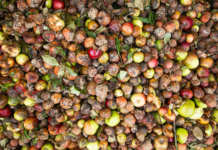The Food Safety and Standards Authority of India (FSSAI) has taken note of CSE’s investigation on honey adulteration. The Authority appreciates the efforts of Civil Society Organizations like CSE to promote awareness among customers about food safety and standards and will utilize the findings of this investigation to bring about any improvements in the food safety ecosystem about honey that are found necessary.
One of the points raised in this investigation is about the non-prescription of Trace Marker for Rice syrup (TMR) for detecting adulteration of rice syrup in honey. Given the fact, a more sensitive Specific Marker for Rice syrup test (SMR) has already been made mandatory and is a more focused test to detect adulteration of rice syrup in honey. Hence, it was felt by scientific experts that TMR is not necessary. This view was concurred by the Ministry of Agriculture, and hence TMR has not been made mandatory as a test method.
Regarding the utility and desirability of NMR for honey testing, it needs to be clarified that NMR allows rapid but database-driven detection and quantification of various chemical compounds, especially for authenticating the origin of a sample of honey. The prior existence of a database is a necessity for the effective utilization of this technique. No such database exists for Indian honey, so that NMR testing will have limited utility. The cost of conducting NMR test is also relatively high, and the volumes available at present would not be sufficient to motivate laboratories for investing in this high-end equipment.
Given the lack of database, high skill requirement, high operating cost, and high capital investment, the scientific panel has opined that NMR is not required at this juncture. The scientific panel has also pointed out that India, of all the countries across the globe, and the Codex Alimentarius Commission have the most stringent standards for honey. It may be added here that almost no food regulator in the world has so far mandated NMR as a test method for honey.
CSE has pointed out that FSSAI has issued instructions for checking adulteration of honey with golden syrup, invert sugar syrup, and rice syrup. CSE has opined that this is an erroneous order because nowadays, companies are using fructose syrup to adulterate honey. FSSAI had issued the said instructions in this regard last year on 23 December 2019, for the first time, based on a request from the Ministry of Agriculture, which had suggested that these imported syrups are being used for adulteration of honey. Action is required to prevent adulteration from various sources, and hence this order is not erroneous but is a part of our ongoing efforts to prevent adulteration of honey.
As far as fructose detection is concerned, the scientific team in FSSAI believes that the currently prescribed method EA – LC – IRMS is as sensitive as NMR, if not better, for detecting fruit origin sugars. The parameters related to isotropic ratio and foreign oligosaccharides are meant for the detection of individual fruit sugars. The isotropic and foreign oligosaccharides, coupled with C3 and C4 sugar detection, can easily determine fruit origin sugars.
It is not clear why some tests like SMR have not been conducted on the samples spiked with adulterants by CSE. FSSAI has requested details of the samples and the tests conducted by CSE. As soon as details become available, they will be analyzed by FSSAI to conclude the protocols followed and suggest any improvements required in the test methodology for the future.
IndiFoodBev — authentic, impactful and influential
An English-language food and beverage processing and packaging industry B2B platform in print and web, IndiFoodBev is in its third year of publication. It is said that the Indian food and beverage industries represent approximately US$ 900 billion in revenues which implies more than 20% of the country’s GDP. Eliminating the wastage on the farmside can help to deliver more protein to a higher number of the population apart from generating sizable exports. The savings in soil, seeds, water, fertilizer, energy and ultimately food and nutrition could be the most immense contribution that country is poised to make to the moderation of climate change.
To improve your marketing and grow sales to the food and beverage processing and packaging industry, talk to us. Our research and consulting company IppStar [www.ippstar.org] can assess your potential and addressable markets in light of the competition. We can discuss marketing, communication, and sales strategies for market entry and growth.
Suppliers and service providers with a strategy and budget for targeted marketing can discuss using our hybrid print, web, video, and social media channels to create brand recognition linked to market relevance. Our technical writers are ready to meet you and your customers for content.
The second largest producer of fruit and vegetables in the world is continuously expanding processing capacities and delivery systems with appropriate innovative technologies. We cover product and consumer trends, nutrition, processing, research, equipment and packaging from farm to thali. Get our 2025 media kit and recalibrate your role in this dynamic market. Enhance your visibility and relevance to existing markets and turn potential customers into conversations. Ask for a sample copy of our bi-monthly in print or our weekly IndiFoodBev eZine each Wednesday.
For editorial info@ippgroup.in — for advertisement ads1@ippgroup.in and for subscriptions subscription@ippgroup.in
Naresh Khanna – 10 February 2025
Subscribe Now











